February 9, 2024
Civilian Conservation Corps (CCC) Badges
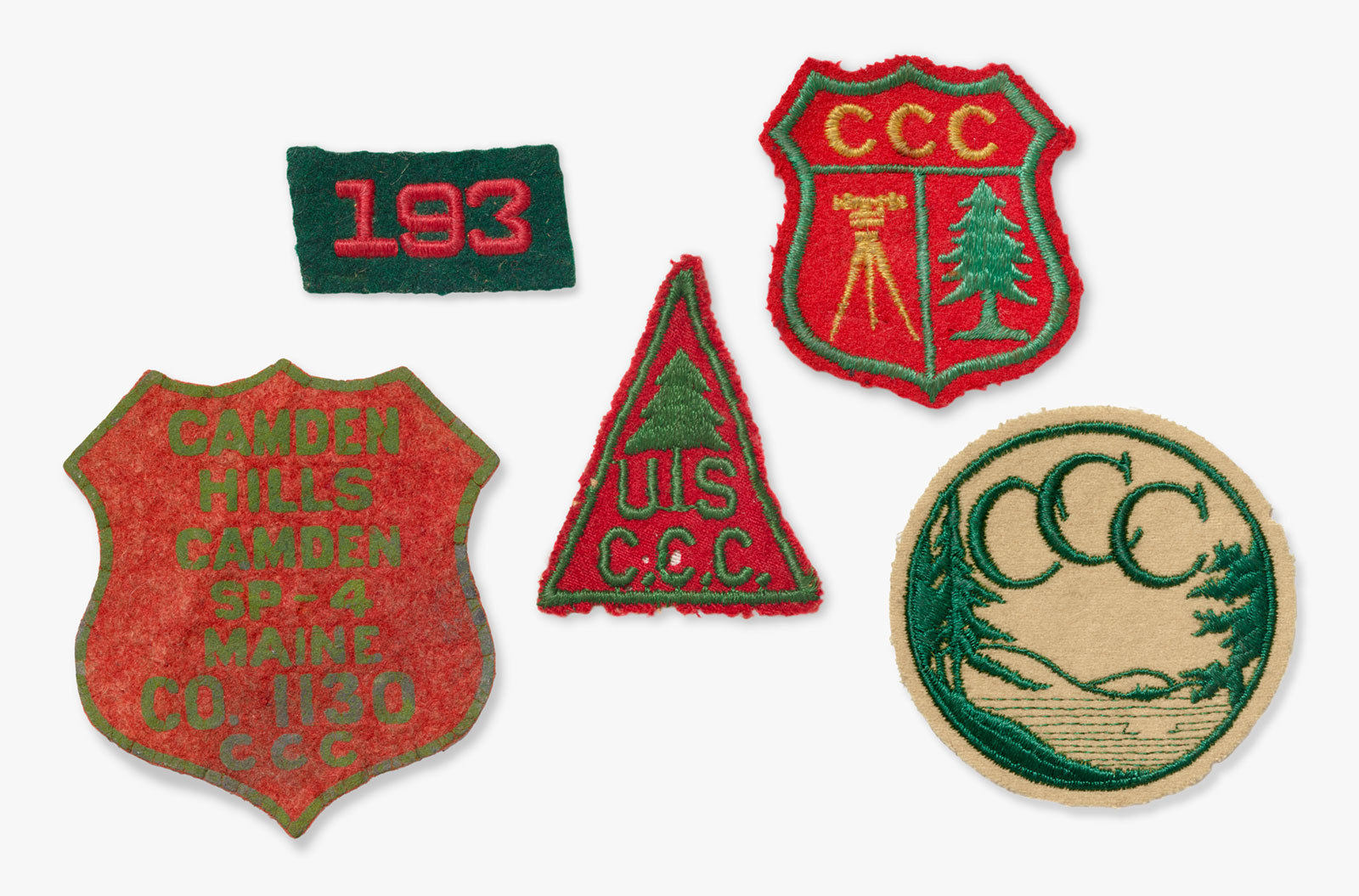
Badges, Civilian Conservation Corps, c. 1935
Wool, silk
The Wolfsonian–FIU, The Mitchell Wolfson, Jr. Collection (XC1994.3144.1–.4) and Christopher DeNoon Collection for the Study of New Deal Culture (XC2010.09.7.182)
The Civilian Conservation Corps (CCC) was established by Congress during the economic and Dust Bowl crises of the 1930s, when unemployment rates in the United States soared to 24.9%. Hundreds of thousands of young men dropped out of school to support their families and entered the CCC; they were joined by First World War veterans and experienced craftsmen who had lost their jobs. Each enlistee received a monthly income of $30—a substantial amount in the Great Depression, allowing for the men to send between $22 and $25 in aid to their loved ones.
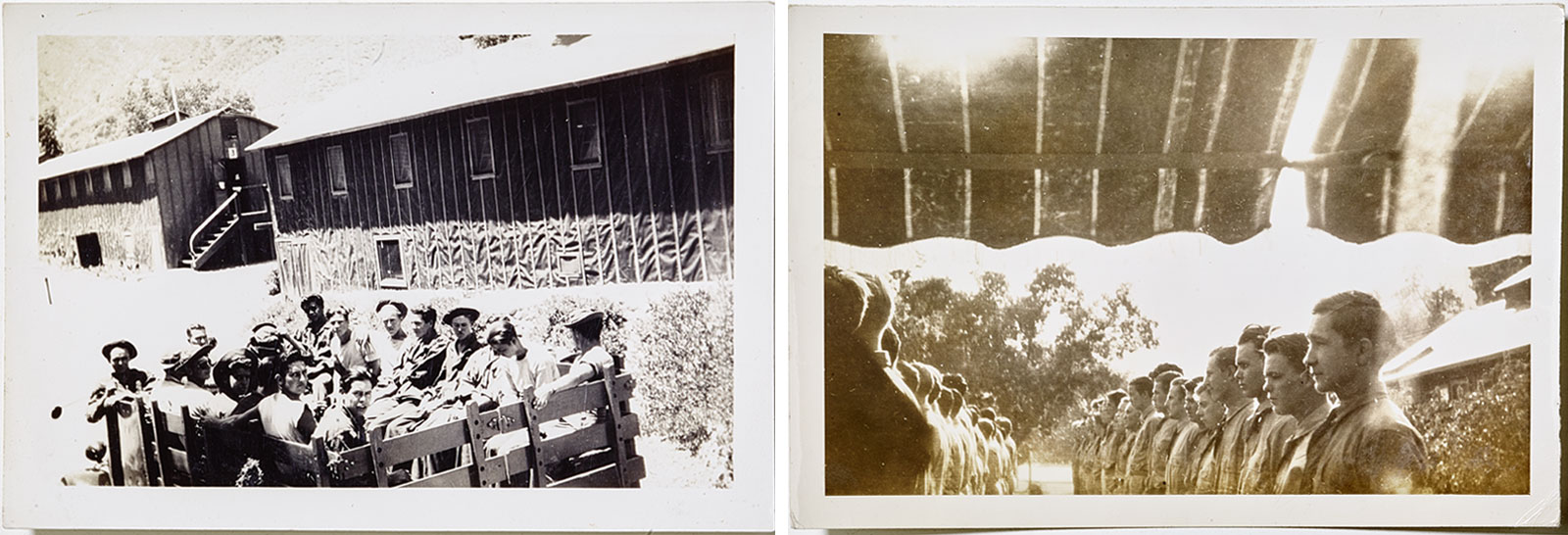
The initiative tasked enlistees with a vital mission: to improve landscapes, trails, and park shelters across the U.S., lending their efforts to projects ranging from environmental conservation to public works. These corpsmen completed their basic and vocational training wearing customized uniform badges, some of which survive in museum and archival collections like The Wolfsonian's.
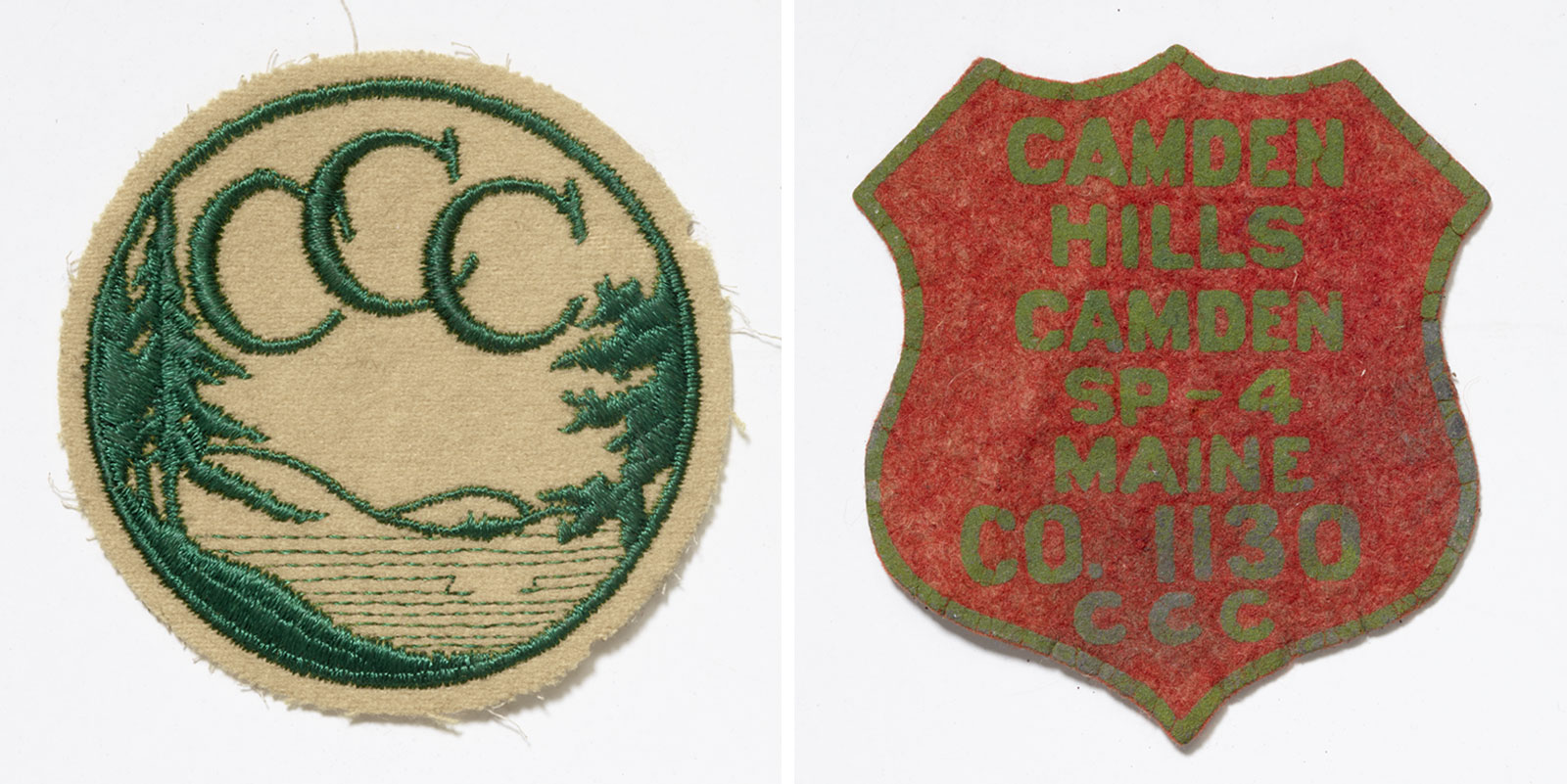
Inspired by military insignia, the badge system reflects the army-like structure of the CCC as well as the program's unique educational thrust. Badges offered a visual means of identifying CCC participants and their knowledge. While some badges simply indicated the enlistee's camp, others were used to incentivize skill-building by crediting an enlistee's mastery of how to combat soil erosion, for example, or how to plant trees using proper distancing methods. Made of embroidered silk on wool, badges were worn on the shoulder or breast pocket to let newer recruits know who to ask if they had questions or needed help from more experienced corpsmen.
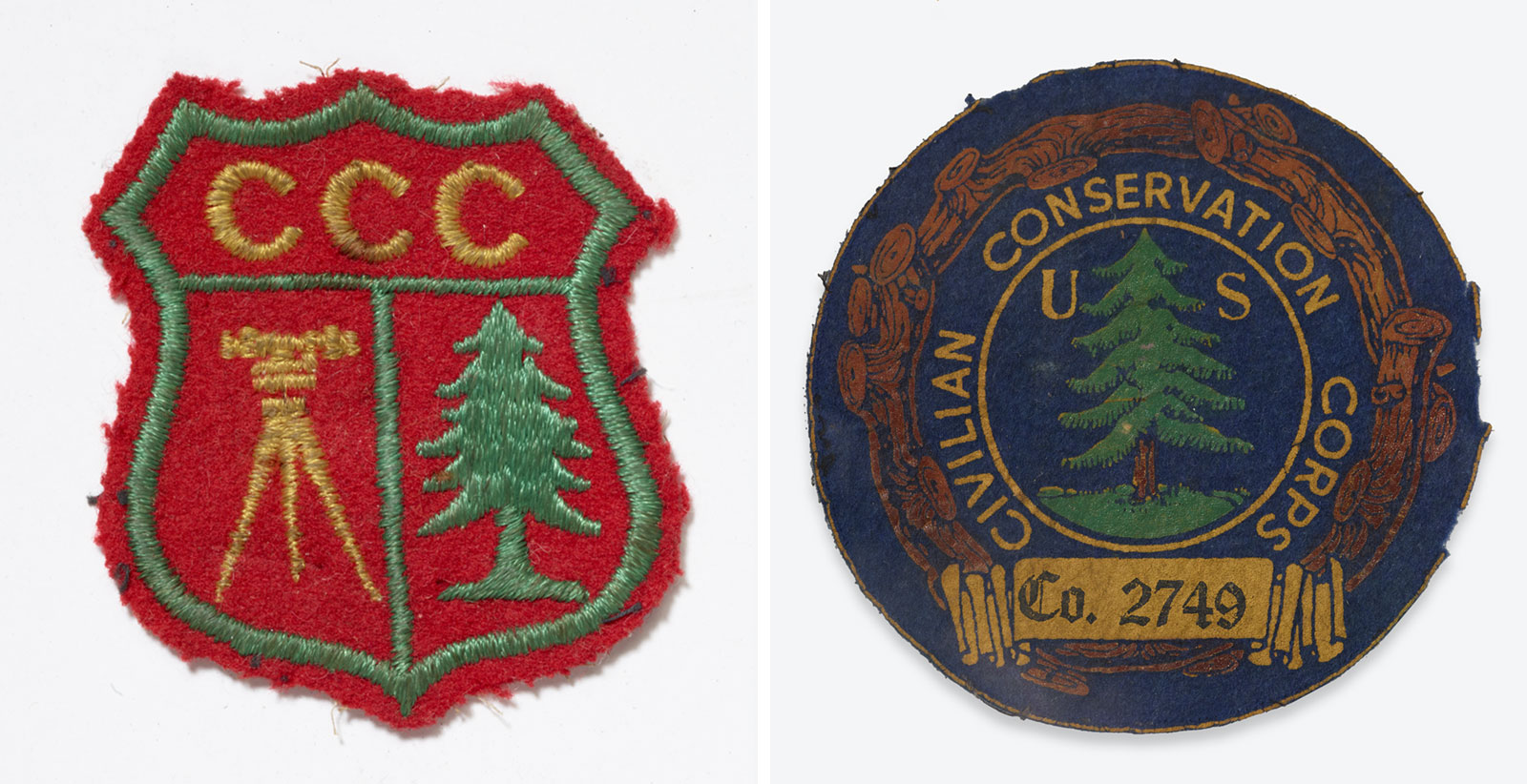
The Wolfsonian's badges only provide glimpses at the nature and wide variety of work CCC participants engaged in during the program's nine-year span. At a particular camp, Idaho Camp F-193 (recognized as company C-603), tasks involved firefighting, erecting fire lookout posts and ranger stations, and combating blister rust, a fungal threat endangering Idaho's forests. Camp F-193's corpsmen significantly altered the landscape of the American West, reinforcing irrigation canals against erosion and forging pathways into the wilderness through of the construction of infrastructure like the Dent Bridge spanning Clearwater River.
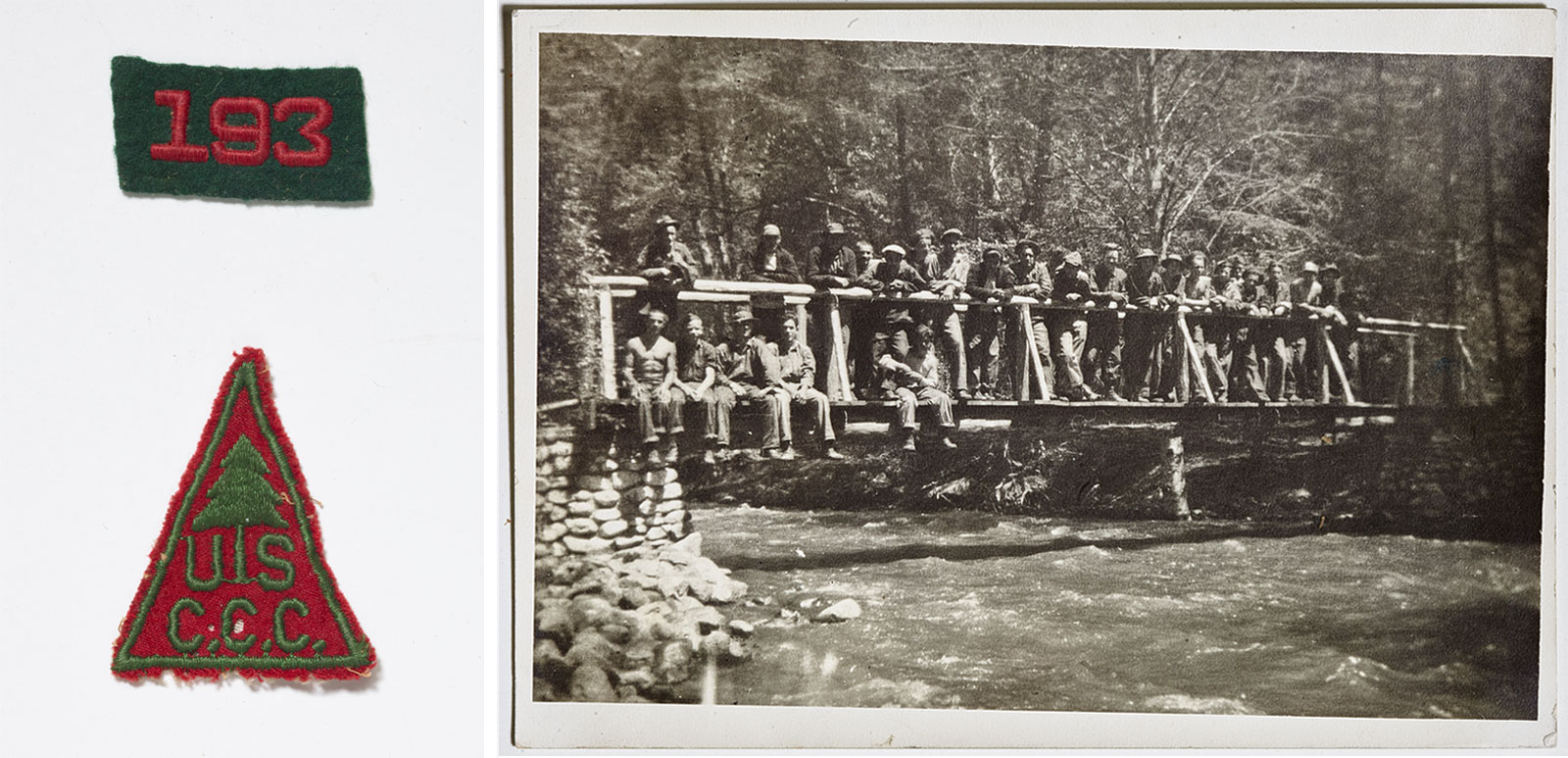
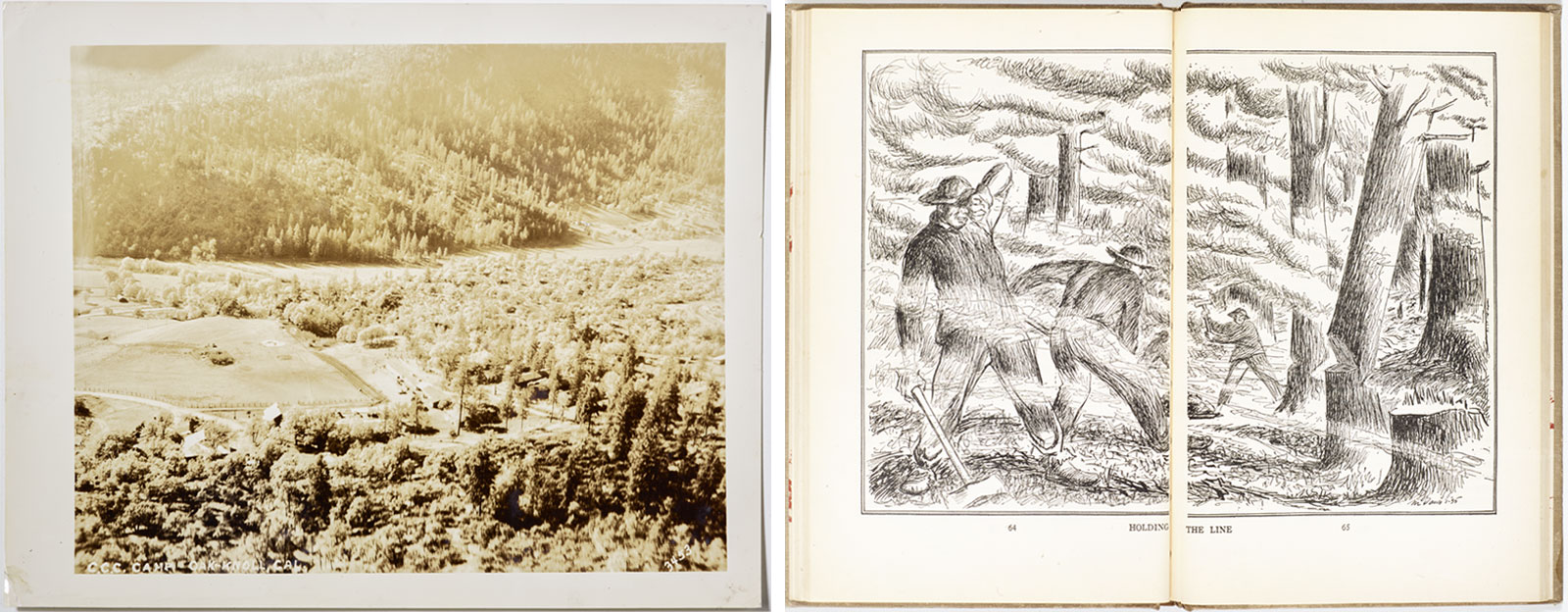
The CCC, considered one of the most successful New Deal programs, stands as a testament to American endurance amidst adversity. It peaked in August 1935 with over 500,000 corpsmen stationed across 2,900 camps and gradually phased out after the start of the Second World War, when the nation's attention and resources pivoted to the frontlines. The initiative left an indelible mark, overseeing more than half of the country's reforestation efforts and resulting in 3.5 billion planted trees and newly developed trails and shelters in over 800 parks across the U.S. The CCC's legacy still resonates, having profoundly shaped the modern national and state park systems that we enjoy today.
– Nicole Andrade, library intern
